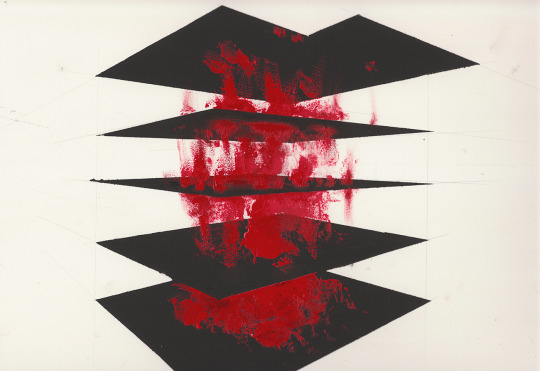Let's be strangers to each other on our shared journey! - While I collect illustrations for an online magazine of hungarian literature, I find all kind of hidden treasures which I am eager to share. Join me for a while and enjoy the ride.
Don't wanna be here? Send us removal request.
Link
2 notes
·
View notes
Photo




Giuseppe Penone, from Thirty-Three Herbs (Trentatre Erbe), 1989.
237 notes
·
View notes
Photo

Giuseppe Penone - “Matrice de sève”, Beaux arts de Paris, 2009
719 notes
·
View notes
Photo










Zhang Kechun - The Yellow River
“Mountains and rivers are very significant for the Chinese people. In this country, there is a cultural awareness that says mountains are “virtuous” and rivers are “moral.”
I was inspired to carry out this project after reading the novel Rivers of the North by Zhang Chengzhi. The book is written in a stream-of-consciousness style and its story follows the paths of many rivers across China. Attracted by the powerful words of the novel, I decided to take a walk along the Yellow River in order to find the root of my soul. Along the way, the calm flow of my mind became flooded with the hectic thoughts and ceaseless stream of reality. I felt a profound pessimism.
Nevertheless, as a vast country with a long history, China’s future is always bright. The country has food for its people and the power of creation that can cultivate strong citizens. From this point of view, it seems, the future is optimistic.
Trying to balance these two sides, my new work explores the landscapes of China, capturing the ecology of its magnificent natural phenomena. The tiny human figures, insignificant when set against the vast natural forms, are inspired by Chinese artistic tradition. My aim is to create a modern point of contact for our contemporary and sociologically concerned eye.“ [via Lens Culture]
335 notes
·
View notes
Photo

Stefan Hoenerloh (German, b. 1960), Variation for: Il Tempietto Farnesina, 2000. Mixed media on paper on plastic, 116 x 79 cm.
372 notes
·
View notes
Photo








“Three students of the National Taiwan University of the Arts have created 100 popsicles made from polluted waters of Taiwan’s lakes, rivers, beaches and ports to raise awareness on the problem of pollution. Setting aside the flavor, the polluted water popsicles contain collected sewage samples that were first frozen and then preserved in polyester resin. Wrapped in packaging also designed by the team, the project highlights the contrast between what is beautiful and what is problematic for the environment.
The one-hundred 1:1 models comprising the Polluted Water Popsicles project showcases — in a pleasing aesthetic way — one of the biggest environmental problems we usually overlook. Each popsicle reveals the impressive contamination of the water through their wasteful flavors complete with plastic, metal, arsenic, mercury, and other harmful materials. The project generates a polarity between how good they look, how awful they may taste, and how damaging they are.
Award-winning Polluted Water Popsicles has become viral since its release, gaining lots of attention in Taiwan and now globally. Rapid economic growth is a problem the whole world is living and water is one of the most affected. By imitating new food trends, the team has made a powerful statement by making something terrible into something beautiful to see by doing this people will be more aware.” [via designboom]
500 notes
·
View notes
Photo

Viktor Timofeev (Latvian, b. 1984), from Redblack (Cyclical Nature), 2007-2009. Gouache and watercolour on paper, 9.5 x 13 in.
3K notes
·
View notes
Photo

The Little Soldier, 1859 by John Burr (Scottish, 1831–1893)
836 notes
·
View notes
Photo

Ross Bleckner (American, b. 1949), Count No Count, 1989. Oil and wax on canvas, 274.3 × 183.2 cm. Whitney Museum of American Art, New York.
544 notes
·
View notes
Photo

Antony Gormley - Capacitor, 2001
See more Antony Gormley posts here.
644 notes
·
View notes

















